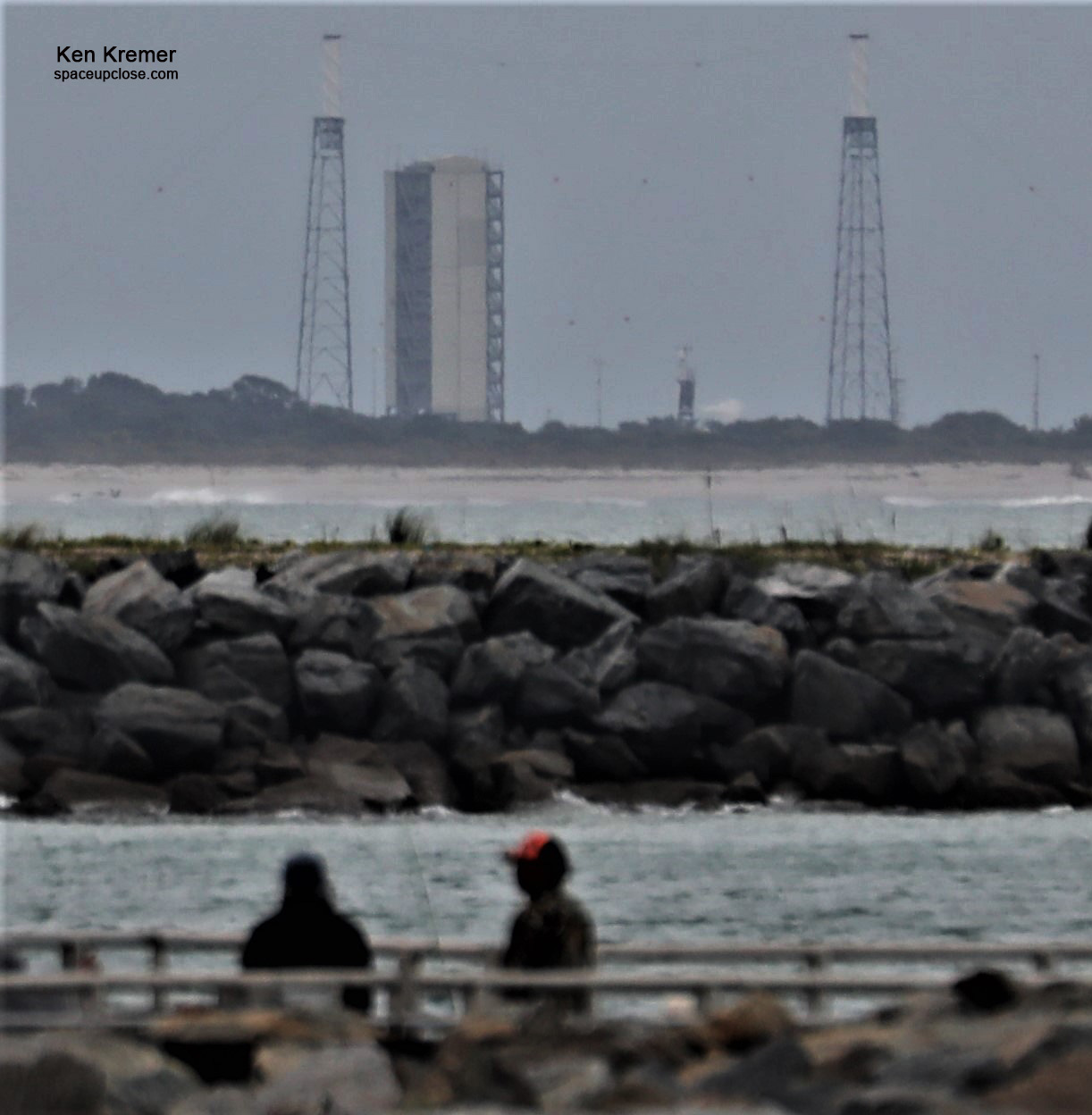
For SpaceUpClose.com & RocketSTEM
JETTY PARK, FL – Astra was forced to scrub the 1st attempt to launch their 1st operational rocket on an orbital flight test from Cape Canaveral on a cubesat mission sponsored by NASA due to a failure in a critical radar hardware system operated by the U.S. Space Force in the Eastern Range that must be operational to ensure a safe launch and that could not be repaired in time before the launch window closed Saturday afternoon, Feb. 5.
The Astra launch attempt from pad 46 came despite completely overcast gloomy skies and extremely high winds over the Cape Canaveral region and what appeared to be truly unfavorable weather.
Saturday’s launch window extended for 3 hours from 1 p.m. to 4 p.m. on Space Launch Complex 46 (SLC-46) on Cape Canaveral Space Force Station.
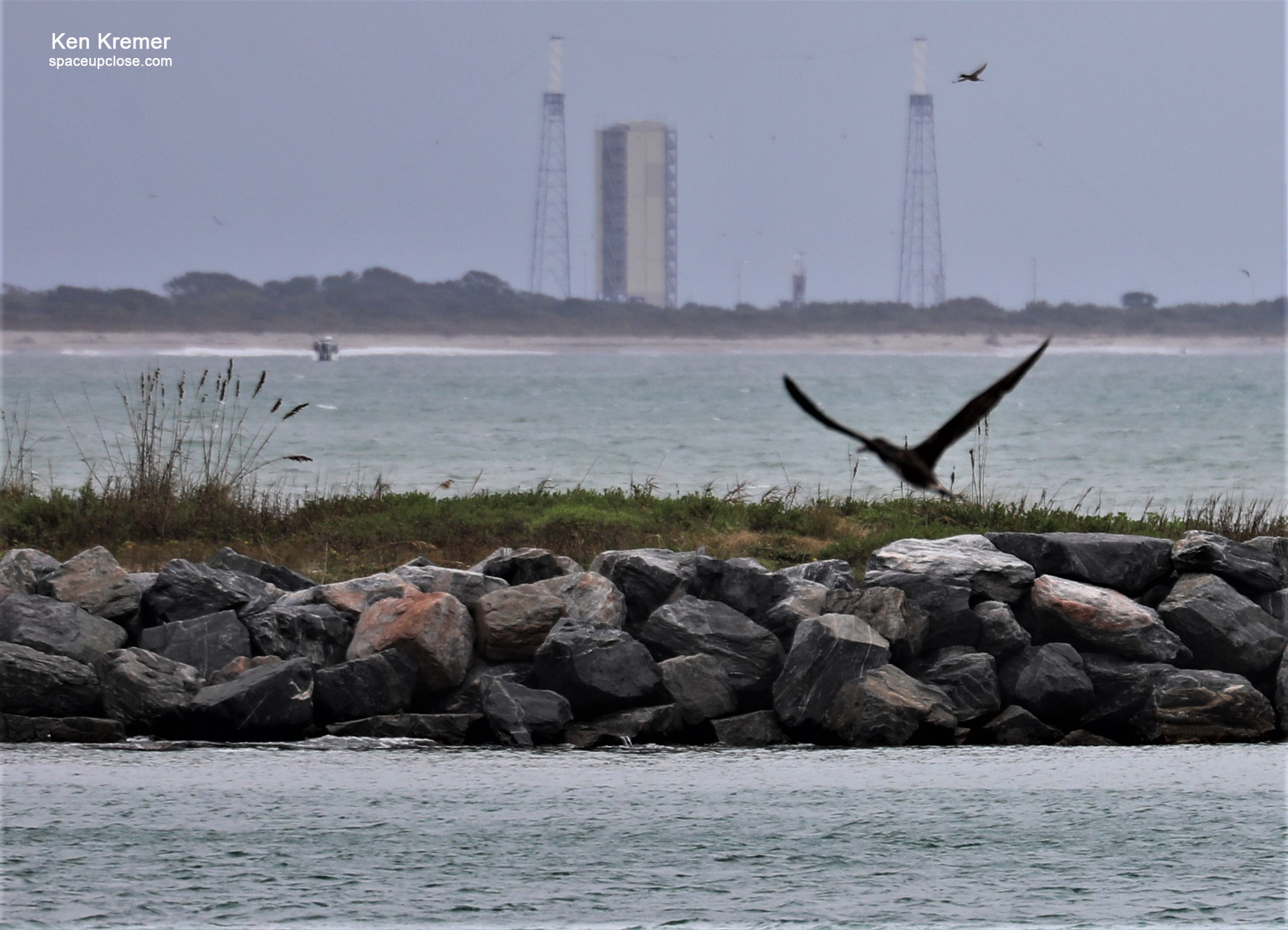
Astra was attempting to launch their tiny new Rocket 3.3 also known as LV0008 on the ELaNa 41 mission carrying four small cubesats sponsored by NASA. ElaNA means Educational Launch of Nanosatellites
The Astra launch team had fueled the rocket with liquid oxygen (LOX) and highly refined kerosene and w2as initially targeting a launcvh time of 2:10 p.m. Saturday
LOX venting was visible from out viewing location at Jetty Park beach about 5 miles distant from pad 46 at the time the scrub was called around 3:20 p.m. when a range asset – namely the radar – was found to be non-operational.
Standing down from today's launch of @NASA's ELaNa 41 mission due to a range asset that went out of service. The team is setting up for next opportunity on Sun., Feb 6. Stay tuned. #AdAstra
— Astra (@Astra) February 5, 2022
The Space Force and Astra CEO Chris Kemp later announced the issue was with the radar hardware
SLD 45 has isolated the radar system issue and is working a solution. We are prepared to support the next launch opportunity. https://t.co/l4ADyGJBp9
— Space Launch Delta 45 (@SLDelta45) February 5, 2022
We are standing down today due to a range equipment failure causing a critical range detection asset to be unavailable to support our launch. Next @Astra launch window opens tomorrow morning at 10AM PT
— Chris Kemp (@Kemp) February 5, 2022
Astra is a new launch provider targeting the small satellite market with their tiny 43 foot (13.1 m) tall launch vehicle which would be the smallest ever to launch to orbit from the Cape.
It measures 52 inches (1.3 meters) in diameter.
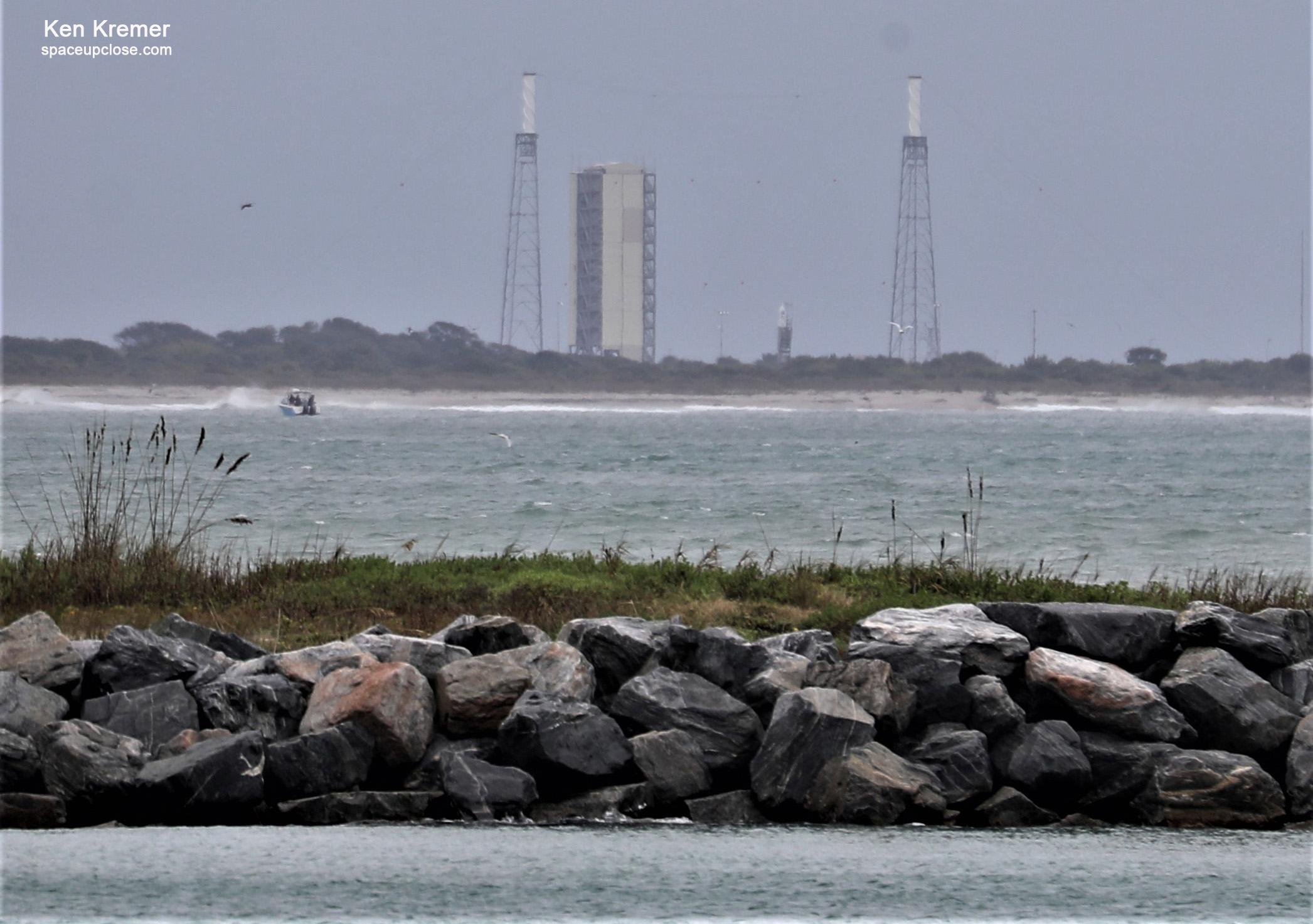
The Rocket 3.3 is capable of carrying payloads of up to 110 pounds (50 kilograms) into an orbit at an altitude of 310 miles (500 kilometers).
This mission is flying to an orbital inclination of 41 degrees
If initially saying they would target Sunday, Astra decide to postpone the launch attempt another day to Monday, Feb. 7 during the same launch window from 1 to 4 p.m.
The weather outlook was not good on Sunday.
However the official Space Force weather forecast is 80% GO for Monday with sunny skies.
The Primary concern is the Cumulous Cloud Rule
Update: We are working with the range on the next launch opportunity for @NASA’s ELaNa 41 mission, which is NET Mon., Feb. 7. Details to come.
— Astra (@Astra) February 6, 2022
The weather forecast drops to 30% GO in case of a delay for any reason to Tuesday, Feb. 9
Astra finally received their launch license from the FAA on Friday, Feb. 4.
📝 We have received our license. @NASA’s ELaNa 41 mission is scheduled for Sat., Feb 5. Launch window opens at 10:00am PT (06:00pm UTC). Stay tuned for updates. https://t.co/Ze8WlLbkB6 #AdAstra pic.twitter.com/1i2jPxWvCJ
— Astra (@Astra) February 4, 2022
Astra was the first company to receive a Part 450 launch license – which streamlines launch licenses for future commercial operators.
Astra is thrilled to be the first company with a Part 450 launch license — streamlining launch licenses in the future. Thank you @faanews for the partnership in support of our goal to expand access to space: https://t.co/IUnLj8V3v4 #AdAstra
— Astra (@Astra) February 5, 2022
The NASA Elana 41 mission is comprised of 4 cubesats about the size of a toaster oven – one from NASA’s Johnson Space Center as well as three from universities.
These student-built satellites are set to go to space tomorrow!
CubeSats from @UofAlabama, @NMSU, @UCBerkeley, and @NASA_Johnson are scheduled to lift off Feb. 5 on @Astra's ELaNa 41 mission—get the details: https://t.co/avzicYd9tX pic.twitter.com/22VFa5BQDW
— NASA (@NASA) February 4, 2022
“The launch is scheduled to carry four CubeSats, or small satellites, to orbit. CubeSats are a cornerstone in the development of cutting-edge technologies such as laser communications, satellite-to-satellite communications, and autonomous movement,’” said NASA.
The CubeSats on the ELaNa 41 mission were designed and built by three universities and one NASA center:
- BAMA-1– University of Alabama, Tuscaloosa
- INCA– New Mexico State University, Las Cruces
- QubeSat– University of California, Berkeley
- R5-S1 – NASA’s Johnson Space Center, Houston
The payloads will be deployed at 8 minutes and 40 second after liftoff.
The Astra Rocket 3.3 mission is contracted by NASA Launch Services Program under the Venture Class Launch Services Demonstration 2 contract.
NASA’s first launch under the Venture Class Launch Services Demonstration 2 contract is targeting NET Feb. 5. @Astra's Rocket 3.3 is set to lift off from Cape Canaveral Space Force Sation carrying the agency's ELaNa 41 mission: https://t.co/gz5NuK2xKm pic.twitter.com/4vqD48BEdw
— NASA's Launch Services Program (@NASA_LSP) February 1, 2022
NASA’s venture class contracts seek to encourage development of a new class of small launch vehicles and launch providers.
Astra, of in Alameda, California, provides launch services to NASA under a Venture Class Launch Services contract, managed by the agency’s Launch Services Program based at Kennedy Space Center in Florida.
“Our objective is to successfully launch and deploy the 4 spacecraft for NASA. This will be our first mission deploying satellites, our first launch for NASA, and our first launch from Cape Canaveral, Florida,” says Astra.
The Astra rocket is powered by five first stage Delphin engines which generate only 32,500 pounds of liftoff thrust
To date Astra has mounted one successful launch in four attempts overall since 2020.
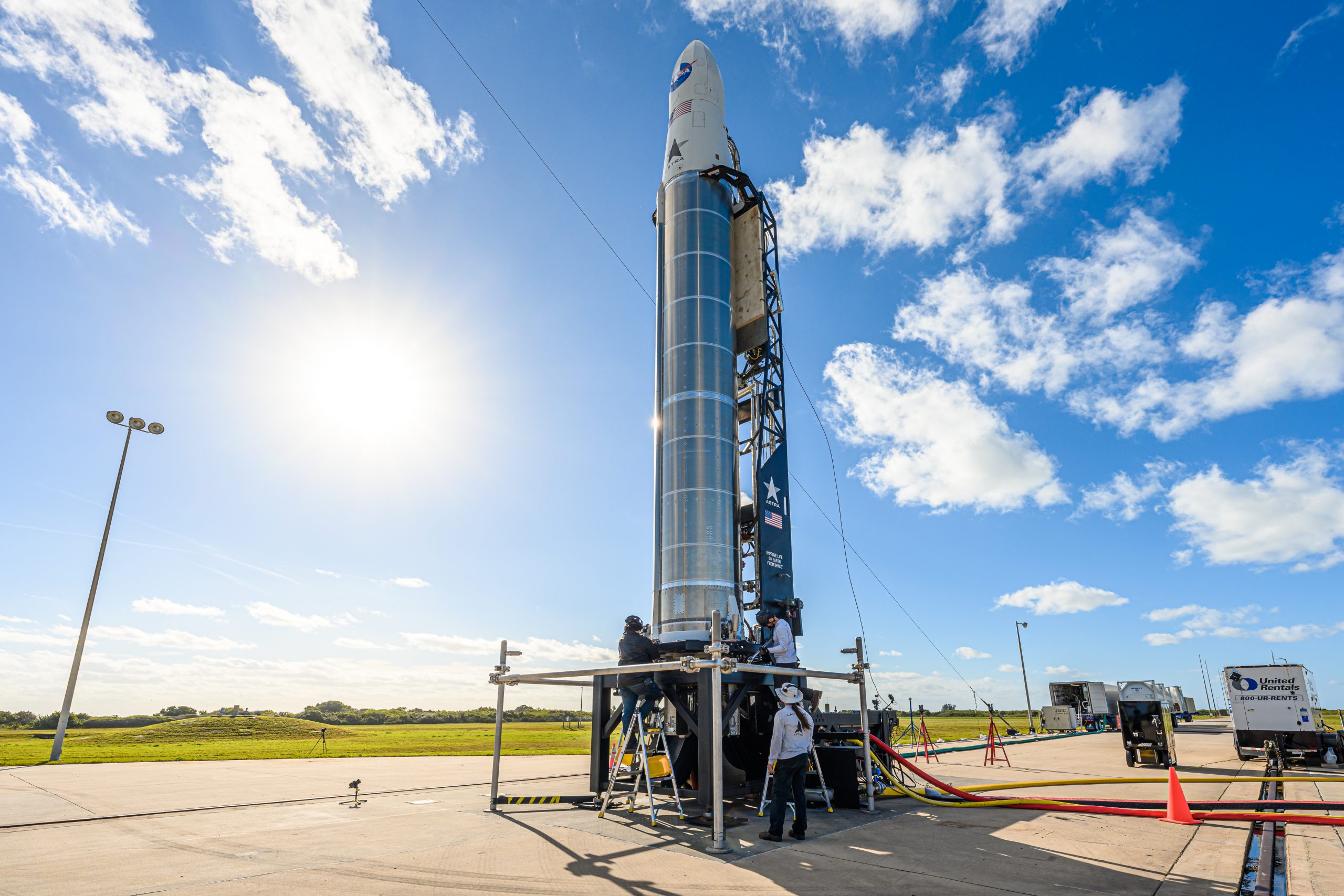
Watch Ken’s commentary at WFTV ABC 9 Orlando News about Astra space targeting 1st Space Coast launch on a NASA mission with their Rocket 3.3
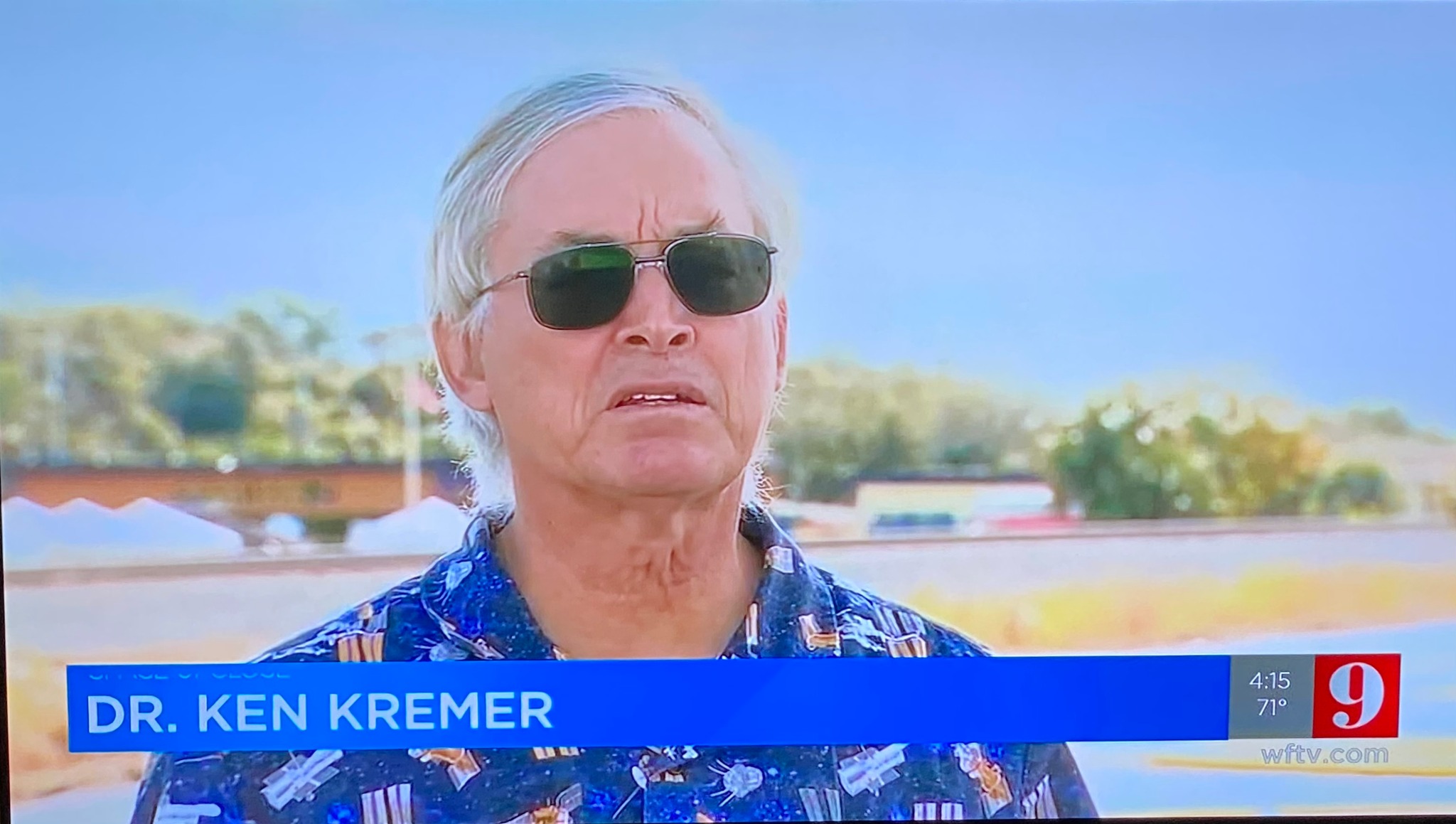
Watch Ken’s continuing reports about SpaceX Crew and Cargo Dragons, SpaceX Starlink , Artemis, SLS, Orion and NASA missions, DART, Lucy Asteroid mission, Blue Origin and Space Tourism, Commercial Crew and Starliner and Crew Dragon and onsite for live reporting of upcoming and recent SpaceX and ULA launches including Crew 1 & 2 & 3, ISS, Solar Orbiter, Mars 2020 Perseverance and Curiosity rovers, NRO spysats and national security missions and more at the Kennedy Space Center and Cape Canaveral Space Force Station.
Stay tuned here for Ken’s continuing Earth and Planetary science and human spaceflight news: www.kenkremer.com –www.spaceupclose.com – twitter @ken_kremer – email: ken at kenkremer.com
Dr. Kremer is a research scientist and journalist based in the KSC area, active in outreach and interviewed regularly on TV and radio about space topics.
………….
Ken’s photos are for sale and he is available for lectures and outreach events
Please consider supporting Ken’s work by purchasing his photos and/or donating at Patreon:
https://www.patreon.com/kenkremer
x



